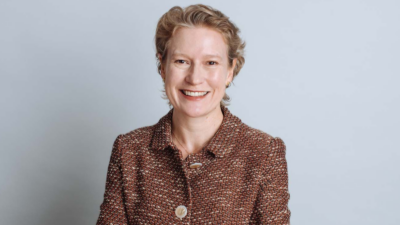Towers Watson gets 20 big investors for game-changing initiative
(Pictured: Tim Hodgson)
Tim Hodgson of Towers Watson has spent about 12 years at the big consultant’s Thinking Ahead Group, campaigning for ideas to revolutionise investment management. Now, the group is set for a new chapter. It has attracted about 20 asset owners and managers to become outside members in a forum, which starts formally in January 2015.
After his years of arguing that the investment industry should provide better value for money for its customers, Hodgson said the decision to form the institute might be a Quixotic tilting at windmills but, at this stage in his career, “I had to have a go.”
His initial call for asset managers and investors who would like to work for big changes has resulted in 19 firm inquiries for membership – 10 from investment managers and nine from asset owners. No names just yet but the list includes players from the UK, US, South African, France and Australia. Hodgson said the response was “better than I was expecting.”
TAG is headed by Hodgson and another Towers Watson luminary, Roger Urwin, and is looking to recruit a third senior researcher to its team which earlier this year added Australian Sonja Lee. The outside members of the new institute will pay undisclosed membership fees which will help it increase its research efforts.
The first project of the institute is likely to be a big benchmarking study on the state of the industry. It plans to engage industry members in research and discussion and later publish its results on its yet-to-be established website (thinkingaheadinstitute.org). Hodgson wants to avoid the Institute becoming a just an intellectual “talk shop.”
His group has long railed against practices like short-termism in investment and high investment fees. Hodgson’s vision is to get the big investors to exercise more control over investment mandates. A good start, he suggested, would be move away from so many active relative value manager and instead have a majority of passive mandate.
With active managers persistently unable to match index returns on average, Hodgson’s reform s would move about perhaps 70 per cent of investments into passive mandates. He said his “educated guess” was that leaving about 30 per cent in the hands of active managers should be enough to set market prices efficiently.
But such a switch in the structure of the investment management market could save an eye-watering amount – perhaps 40 per cent of current fees paid or annual savings of around $144 billion based on his current estimates of $350 billion of total fees.
Just how this change might happen was really in the hands of the asset owners. It was up to them to control the mandates they offered, Hodgson said. If that happened, it would bring about bottom-up change. But there were no magic wands.
He said it would be quite easy to be defeatist at such a huge task of changing the funds management industry from its present level of about 15 per cent managed passively. But unless the current incentive structure changed, nothing would happen.
While the audience of more than 150 fund managers and fund investors – many no doubt aware of the career risk involved – seemed to engage with his provocative vison, Hodgson though they also were a bit “bemused.”
And he admitted his ideas represented an attempt to disrupt the status quo in the industry, adding “let’s face it, the status quo provides our current salaries.”
– Barrie Dunstan










